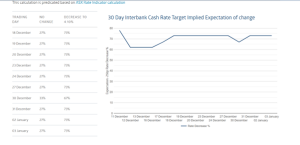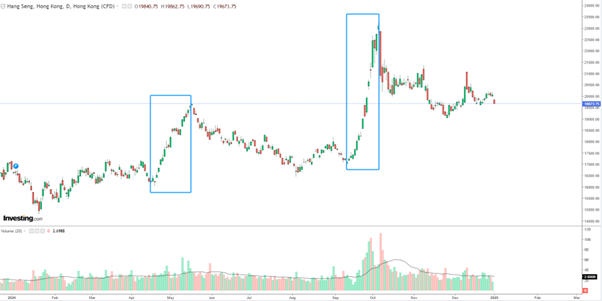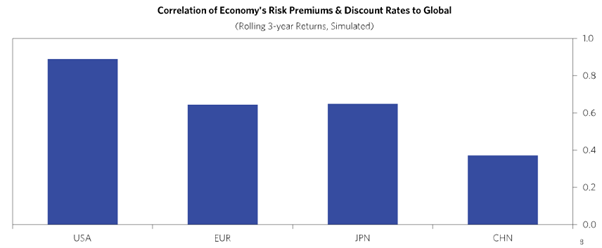市场资讯及洞察
.jpg)
量子计算:和平年代的“核武器”,以及赛道上的7大玩家
提到“核武器”,大家想到的是改变战争格局的终极威慑力;而在没有硝烟的和平年代,量子计算正成为新的“战略王牌”。
它不靠爆炸力,而是靠指数级算力重塑科技、经济、安全的底层逻辑。谁先掌握它,谁就能在新药研发、信息安全、新能源等领域抢占先机。
这是一场没有硝烟的“量子军备竞赛”,而谷歌、IONQ等公司,就是这场战争的主角。
一、为什么说量子计算是和平时期的“核武器”?
普通电脑像“单线程快递员”,一次只送一件包裹;
量子计算靠“量子比特分身术”,能同时处理海量信息——10个量子比特就能同时计算1024种状态。
这种差距,不是“快一点”,而是“维度不同”:就像骑自行车去追火箭。
它能干的事堪称“颠覆级”:
· 破解银行、互联网加密系统(别人算几百年,它几小时搞定)
· 模拟分子结构加速药物研发(几年缩成几个月)
· 优化交通、金融、能源系统(让全球效率更高)
所以,谁掌握量子计算,谁就能制定未来的技术规则和安全标准。这份话语权,正如核武器之于国家安全一样。
二、赛道上的7大玩家:谁在领跑?
1. 谷歌(GOOGL)——超导路线的“火箭选手”
谷歌是量子计算的顶流。
它的超导芯片“Willow”已经做到105个量子比特,速度比全球最快超算还快1.3万倍。
它能计算分子结构,加速新能源电池和抗癌药研发。
谷歌放话:5年内实现实用化应用。
短板也有:超导量子比特太“娇气”,要放在比南极还冷几百倍的环境里,目前还只能处理特定任务。但作为科技巨头,谷歌的资源和研发速度,让它仍是最有可能先造出“量子核武”的玩家。
2. IONQ——离子阱路线的“精密工匠”
IONQ用激光“抓住”带电原子作为量子比特,精度极高、错误率低。
它靠32个量子比特就宣称实现“量子优越性”,比谷歌还早一步。
现在专攻“量子纠错”,让运算更稳定,是迈向实用的关键。
缺点是难以扩展,加一个比特像往积木塔上叠块砖,容易影响整体。
但在科研模拟、精密计算等领域,它的“精准”优势明显,有望后来居上。
3. 霍尼韦尔(HON)——幕后“装备大佬”
霍尼韦尔虽然不出风头,但它的子公司Quantinuum是离子阱路线的中坚力量。
更重要的是,霍尼韦尔的激光器、制冷系统、测控设备,是全球量子实验室的标配。
它是量子领域的“军工厂”,不造火箭,但造发动机。
在未来的产业链中,它是所有玩家都离不开的“幕后功臣”。
4. QUBT——专做“量子安全”的锁匠
QUBT不做量子计算机,而是做防量子破解的安全加密。
它利用量子技术生成不可预测的密钥,给数据上“防量子锁”。
银行、政府机构已经在用它的产品。
未来量子计算能破解传统加密,而QUBT的锁正是抵御“量子黑客”的盾牌。
算是最贴近普通人生活、最早能变现的应用方向。
5. QBTS——“软件+硬件”的小众探索者
QBTS采用特殊的核磁共振技术,在常温环境下也能运行,不用极冷设备。
目前算力较弱,主要帮企业做物流规划、路线优化等小型任务。
虽然不是“超级计算怪兽”,但胜在灵活低成本,可能在特定场景率先落地。
6. Rigetti(RGTI)——被巨头甩开的追赶者
RGTI走超导路线,推出过80比特设备,但进展放缓。
现在主攻“量子云平台”,让企业租算力做实验。
只是面对谷歌、IBM的强势,它的技术差距越来越大,市场声音也逐渐变弱。
7. Laser Photonics(LAES)——“量子副业”的蹭热股
LAES主业是激光设备,量子只是“副业”。
偶尔宣布要搞“光量子技术”,但没有实际芯片或数据。
目前更像是“站在量子赛道边上的观察员”,未来潜力有待验证。
三、我们应该关注什么?
不能以为这只是科研人员的游戏。量子计算未来影响的是你我的生活:新药更快上市,电动车续航更高,网络支付更安全,物流更智能。
如果要关注投资方向或应用落地:
谷歌:技术最强、速度最快,五年内可能看到实用成果;
IONQ:纠错领先,科研和精密行业潜力大;
QUBT:防量子黑客的“安全护盾”,最贴近现实场景。
四、结语:量子“军备竞赛”才刚开始
量子计算不是“更快的电脑”,而是和平年代的核武器。它决定未来科技的主导权,也重塑国家竞争格局。
现在的玩家,有的快、有的稳、有的专,但真正的胜者,取决于谁能先跨过“纠错”和“可扩展”这两道坎。
十年后,你用的药、开的车、上的网,背后可能都有量子计算的力量。这场“无声的军备竞赛”,正在改变人类的未来。


热门话题
作为2025年新年开局的第一周,各大银行和证券机构的各种“先知”们都纷纷发表各自对于未来1年经济走势的观点。百家齐放,众说纷纭,可谓是一锅乱炖。作为半业余选手,自然我们也要加入这年初的瞎猜大赛中,为自己未来吹牛时赢得更多资本。我经常和朋友和同事说,任何时候,不要怕错,你需要怕的是没有自己的观点。反正经济不是上涨就是下跌,利率不是降息就是不动,你怎么做都是至少50%的机率赢。所以千万不要怕,要敢于表达自己的观点。

好了,废话不多说,就2025年澳洲的整体情况,以及几个大家感兴趣的话题,我来瞎扯几句:1. 经济情况。由于澳洲特殊的经济结构,以及其前世800年修来的福气,导致了在加息快2年的情况下,失业率依然没有明显上涨,经济看上去好像还是没有垮掉,通胀依然高企,市场很多岗位依然非常缺人。所有这些看似都比其他欧美国家好,也直接导致了澳洲央行不断延迟降息。如果我们用一个词来比喻澳洲目前的情况,就类似于我们人,一次吃了20个馒头,直接撑住,非常难受,导致就算后面几天不吃饭,也依然不感觉饿。但是,只是感觉不饿,实际因为吃不下东西,导致身体已经缺少营养,导致抵抗力已经在削弱。澳洲的情况就像是吃撑以后的人,看上去吃饱了,实际上已经严重营养不足。2. 在所有的发达经济体中,占据GDP最大份额的肯定都是第三产业,也就是消费和服务业。也就是我们经常说到的房地产,金融,银行,旅游,教育等等这些板块。而决定澳洲第三产业总消费额度主要取决于三个因素:1.澳洲降息速度。2.澳洲的移民开放力度以及移民选择。3.中美之间的贸易争议在2025年到底会严重到什么程度。接下来我们就这三个决定澳洲2025年走势的主要因素来掰扯掰扯。还是那句话,我就瞎这么一说,大家就瞎这么一听。澳洲的降息速度。我在N个月前多次表示,澳洲2024年99%不可能降息。为啥呢,和经济无关,和美国无关,和女行长面子有直接且必然的关系。女行长都说的很清楚了,2024年之前,她没打算降息。另外也给出了降息的要求:失业率升到4.5%,或者通胀降低到3%以内。毫无疑问,现在一个都没到。那是不是意味着2025年2月就降息呢?按照目前市场给出的可能性,大约有70%的可能会降息。

但是,如果届时发布的通胀数据依然过高,这30%的不降息概率完全可以在一天内提高到50%以上。所以,澳洲什么时候降息,其实本质上还是要看大家被高利息折磨的还够不够惨,如果够惨,都不吃饭了,都不消费了,都不买房了,都不旅游了。超市,商场的东西卖不出去了,就马上降息了。那现在的情况,大家都感觉,已经够差了,应该差不多了吧。这通胀构成比例中,我之前给大家分析过,最大的几个部分就是:住房价格,交通,生活必须,水电账单,建房成本,以及娱乐消费。而住房价格其实就是租房是统计通胀里最大的因素之一。为了降低租金,澳洲政府也是拼了,不惜牺牲教育收入,大幅削减大学招聘的留学生数量。然而,但是,BUT,从刚刚发布的2024年底大学新生人数来看,明年澳洲大学居然又是一个创纪录的新生年。我滴娘啊~~~这就意味着,各大城市依然有大量的新留学生来抢着租房。对房东来说是好事,但是对于通胀来说,你懂的。由于澳洲顽固的通胀,2025年极大的可能澳洲央行会选择谨慎而缓慢的降息,而不是美国那种0.5%,0.5%的双倍降。很有可能是,0.25%,然后等3个月,讨论2个月,再降0.25%,再观察3个月,讨论2个月,再决定。所以2025年,大概率情况下,澳洲降息不会超过3次。总降息不超过1%。但是以上判断也会因为环境改变而变化,其中最大的潜在可能,也是我们不想看到的,就是因为经济快速恶化,所以即便通胀还没有完全达到目标,澳洲央行也会动手。而澳洲经济忽然加速恶化的可能性并不多,最大的可能,来自于因为美国新总统上台之后如果对于包括加拿大,墨西哥,中国,甚至澳洲添加额外关税的话。那势比引起各国之间的反击政策,而恶化的贸易环境,也将直接影响到各国的经济。如果澳洲的经济因此而快速恶化的话,则降息的速度和力度都会马上增强。但是我们都不愿意看到。总结来说就是两个字:纠结。如果中美不搞事情,澳洲经济不会差的太快,那降息就晚点来。如果贸易环境恶化,导致中国对于资源的需求进一步降低,引起澳洲经济的连带反应,那澳洲央行将迅速,果断的降息。但那时,降息给我们多出来的那点钱,肯定不够抵御因为总体经济下行所引起的负面反应。但是不论澳洲如何,有一点是比较明确的:明年美元,和美国资产(例如股票),将会因为特朗普的贸易保护主义政策而收益。免责声明:GO Markets 分析师或外部发言人提供的信息基于其独立分析或个人经验。所表达的观点或交易风格仅代表其个人;并不代表 GO Markets 的观点或立场。联系方式:墨尔本 03 8658 0603悉尼 02 9188 0418中国地区(中文) 400 120 8537中国地区(英文) +248 4 671 903作者:Mike Huang | GO Markets 销售总监


热门话题
上周在没有重大金融数据影响的前提下美股2024未能留下良好的收尾,但2025开年后表现不错,周五一天大幅反弹基本收复整周颓势,纳指收涨1.77%,标普上涨1.26%,道指也有0.8%的反弹,罗素2000小盘股指数反弹1.72%,美股周五实现普涨行情。本周非农作为最主要的经济数据足以影响1月行情走向,目前预测值仅15万增幅大幅低于前值超20万数据,但也没有低于10万那么惨淡,因此该数据在周五落地前是有利于促进美联储降息的,整体来说预期对股市是利多的。

板块方面美股基本普涨,半导体板块涨幅较大,国际铀价快速反弹令美铀上涨迅速,核技术股更是走出两位数比例的单日反弹。AI板块,高科技指数,稀土,锂电池,银行业,地产以及工业板块均涨超1%。ARM涨超10%,特斯拉反弹8.22%重回$400以上,英伟达涨超4%,PLTR和C3均涨超6%预示着2025年AI应用层相关股将大幅走强。核能铀矿无疑是未来几年的大牛标的,在2024年整年铀价回撤后,国际供需情况令2025铀价上行空间加大,AI算力和电动车电力需求令核能成为不二选择。今天澳铀还将继续稳健上行。BTC大幅反弹,相关概念股齐涨,MSTR涨超13%,COIN涨超5%。量子计算题材周五略显平庸,无人机概念继续爆发,SES再涨18%。美股股指期货有望实现持续反弹波段,美元指数在暴涨至109以后小幅回落,但美元强势依旧,随着风险因素小幅下降,金价也有一定程度下行,恐慌指数快速回落。能源价格的反弹因俄乌局势还在热炒中,美油继续上涨冲上74美元大关。外汇方面美元的小幅回落令非美货币有了一丝喘息,澳美勉强重回0.62平台,美日没有进一步上涨,美元人民币继续因人民币持续贬值而稳定上行,在冲破7.3大关后已经一度攀升至7.36以上。免责声明:GO Markets 分析师或外部发言人提供的信息基于其独立分析或个人经验。所表达的观点或交易风格仅代表其个人;并不代表 GO Markets 的观点或立场。联系方式:墨尔本 03 8658 0603悉尼 02 9188 0418中国地区(中文) 400 120 8537中国地区(英文) +248 4 671 903作者:Xavier Zhang | GO Markets 高级分析师


热门话题
上周在没有重大金融数据影响的前提下美股2024未能留下良好的收尾,但2025开年后表现不错,周五一天大幅反弹基本收复整周颓势,纳指收涨1.77%,标普上涨1.26%,道指也有0.8%的反弹,罗素2000小盘股指数反弹1.72%,美股周五实现普涨行情。本周非农作为最主要的经济数据足以影响1月行情走向,目前预测值仅15万增幅大幅低于前值超20万数据,但也没有低于10万那么惨淡,因此该数据在周五落地前是有利于促进美联储降息的,整体来说预期对股市是利多的。

板块方面美股基本普涨,半导体板块涨幅较大,国际铀价快速反弹令美铀上涨迅速,核技术股更是走出两位数比例的单日反弹。AI板块,高科技指数,稀土,锂电池,银行业,地产以及工业板块均涨超1%。ARM涨超10%,特斯拉反弹8.22%重回$400以上,英伟达涨超4%,PLTR和C3均涨超6%预示着2025年AI应用层相关股将大幅走强。核能铀矿无疑是未来几年的大牛标的,在2024年整年铀价回撤后,国际供需情况令2025铀价上行空间加大,AI算力和电动车电力需求令核能成为不二选择。今天澳铀还将继续稳健上行。BTC大幅反弹,相关概念股齐涨,MSTR涨超13%,COIN涨超5%。量子计算题材周五略显平庸,无人机概念继续爆发,SES再涨18%。美股股指期货有望实现持续反弹波段,美元指数在暴涨至109以后小幅回落,但美元强势依旧,随着风险因素小幅下降,金价也有一定程度下行,恐慌指数快速回落。能源价格的反弹因俄乌局势还在热炒中,美油继续上涨冲上74美元大关。外汇方面美元的小幅回落令非美货币有了一丝喘息,澳美勉强重回0.62平台,美日没有进一步上涨,美元人民币继续因人民币持续贬值而稳定上行,在冲破7.3大关后已经一度攀升至7.36以上。免责声明:GO Markets 分析师或外部发言人提供的信息基于其独立分析或个人经验。所表达的观点或交易风格仅代表其个人;并不代表 GO Markets 的观点或立场。联系方式:墨尔本 03 8658 0603悉尼 02 9188 0418中国地区(中文) 400 120 8537中国地区(英文) +248 4 671 903作者:Xavier Zhang | GO Markets 高级分析师


The Parabolic SAR (Stop and Reverse) is a widely recognised technical indicator that has stood the test of time and is used by many trades to this day. First introduced by J. Welles Wilder in his 1978 book "New Concepts in Technical Trading Systems", the Parabolic SAR gained popularity as a trend-following tool due to its simplicity and visual appeal.
By plotting dots above or below the price, the indicator facilitates traders to identify potential reversal points in the market that can theoretically be used as the basis for long or short strategy entry points and, of course, for exit also. However, like any trading tool, it is worth emphasising that the Parabolic SAR works best when combined with other criteria and considerations and an understanding how it works is necessary prior to developing a trading strategy around this approach to trading reversals. This article explores how to effectively use it for entry and exit points, discusses its advantages and limitations, and introduces refined methods to improve its reliability.
What Is the Parabolic SAR? In simple terms, the Parabolic SAR is a price and time-based indicator designed to highlight potential trend reversals. Its dots appear: Below the price during an uptrend, indicating bullish conditions.
Above the price during a downtrend, indicating bearish conditions. As trends develop, the dots "accelerate" closer to the price, making the SAR more sensitive to price movements. This acceleration is driven by a so-called “ Acceleration Factor (AF)”, a parameter that increases as the trend continues.
Ultimately, and as a sign that a trend may be ending, the dots change from below to above and vice versa depending on trend direction. So, as with any strategy with trend following at its basis this indicator can be used in decision making for such strategies. Before we get into its actual use there are a few noteworthy benefits and limitations worth highlighting.
The chart example below (4-hourly gold CFD) shows the basic concept of SAR dot entry and exit for long and short trades respectively. Advantages of the Parabolic SAR The Parabolic SAR offers a few key benefits that can add to both its ease and method of use, these include: Visual Simplicity: Its dots provide an intuitive, easy-to-read representation of trend direction and potential reversals. Dynamic Trailing Stop: The SAR adapts to price movement, making it a useful tool for managing risk and locking in profits.
Trend Confirmation: It helps traders stay in trending markets by signalling when to hold positions or whether it may be worth considering exit. Versatility: Although originally designed for use on stock charts, calculation of the dots happens automatically irrespective of the chart you are applying it to, thus contributing to its popularity through adapting to any instrument (e.g. Forex, index or commodity CFDs) or timeframes.
Limitations of the Parabolic SAR Despite its advantages, the SAR has notable drawbacks: Choppy Market Signals: In ranging or sideways markets, the SAR often generates false signals, leading to unnecessary trades. Lagging Nature: While the SAR adapts over time, as with the majority of platform based indicators, it can lag during fast-moving trends, resulting in delayed exits. Lack of Context: The SAR does not consider market context, previous support and resistance levels, or external factors like news events.
Explanation of the Parabolic SAR Settings (PSAR) The two key default settings of Step (0.02) and Maximum Step (0.20) that you will see when you open the indicator on your trading platform, aim to strike a balance between sensitivity and stability. These settings are generally designed to work well in trending markets, and although we usually suggest that when first used, you use the default settings, you will discover in time there may be some benefit in adjustment for different trading styles or market conditions. As with all indicators used on your charts, you should not only understand what the indicator is telling you (and what it is not!), but also what settings indicate so that you may adjust to suit your particular trading style and objectives.
Understanding how these settings affect the indicator's responsiveness is key to optimising the potential use of this indicator. Step (Acceleration Factor): Default Value: 0.02 What It Does: The Step determines the rate at which the SAR dots accelerate toward the price as the trend progresses. Each time a new high (in an uptrend) or a new low (in a downtrend) is reached, the SAR calculation becomes more sensitive by increasing the Step value.
The Step starts at the initial value (e.g., 0.02) and increments by the same amount with every new extreme point in the trend. Impact: A smaller Step (e.g., 0.01) results in a slower acceleration, making the SAR less sensitive but more suitable for long-term trends. A larger Step (e.g., 0.03 or 0.05) increases sensitivity, making it more responsive but prone to false signals in choppy markets.
Maximum Step: Default Value: 0.20 What It Does: The Maximum Step is the cap for how far the Step value can increase during a trend. It ensures that the SAR does not become overly sensitive as the trend progresses, which would lead to premature reversals being signalled. Impact: A lower Maximum Step (e.g., 0.10) results in fewer reversals being signalled, making the SAR more stable in strong trends.
A higher Maximum Step (e.g., 0.30) increases sensitivity and may generate earlier exit signals but can also lead to more false positives. How These Settings Work Together The Step and Maximum Step settings control how quickly the SAR dots move closer to the price and how responsive the indicator is: At the start of a trend, the dots are further away from the price. As the trend strengthens, the Step increases, bringing the SAR dots closer to the price.
Once the Step reaches the Maximum Step, no further acceleration occurs, maintaining stability during extended trends. Examples of the Default Settings in Action Slow and Strong Trends With the default Step of 0.02 and Maximum Step of 0.20, the SAR is moderately sensitive: It allows the price some room to fluctuate without immediately signalling a reversal. This is ideal for trending markets where the price steadily moves in one direction.
Use a smaller Step (e.g., 0.01) and Maximum Step (e.g., 0.15) for smoother, less frequent signals that may suit swing or long-term traders. Short-Term, Volatile Markets If you increase the Step to 0.03 or 0.05, the SAR becomes more responsive (and so may suit scalpers or short-term traders): It adjusts faster to price changes, signalling reversals more quickly. However, this can lead to more false signals in sideways or choppy markets.
Use the Parabolic SAR for Entry Using the Parabolic SAR for entries is most effective when combined with other criteria to filter out false signals. Consider the following refined entry criteria: Dot Switching: Look for the SAR dot to switch from above the price to below (for a long entry) or from below to above (for a short entry). Candle Structure: For long entries, an entry candle close in the top 30% of its range, may suggest bullish momentum.
For short entries, an entry candle close in the bottom 30% of its range, may support bearish momentum may be developing. Sequence Length: Confirm that the previous SAR sequence lasted for at least 3 dots. This helps avoid signals caused by short-lived consolidations and retracements.
Volume Confirmation: Look for increasing volume during the breakout or reversal, which strengthens the likelihood of a genuine trend shift. Confluence with Additional Indicators: There may be some benefit in combining the SAR with complementary indicators such as the MACD. Look for MACD line crossovers to confirm the trend and increasing momentum as seen in the histogram bar length.
Proximity of previous key levels: Close proximity of previous resistance levels or swing highs above a potential long trade may be an indication that upside potential may be limited. Therefore, some caution in entry may be prudent, Obviously, the reverse is the case for short trades i.e. watch for close proximity of previous support or swing lows near short entry, Entry Criteria 2: Alternative approaches Although not commonly discussed, in an attempt to avoid the risk of a consolidating market with dots frequently switching above and below price there are a couple of additional approaches that may be worth consideration and testing. Using higher timeframe confirmation of trend: This could be using any presence of trend indicator e.g., a 4-hourly chart when trading an hourly timeframe, Using a breach of the price of the first dot of the previous sequence: This may suggest a move out of any potential sideways trend.
Let’s call this an “A dot” for this explanation. The chart example below (GBPJPY 30min) shows using the A-dot of previous SAR dot sequence a breach of which confirms move above potential sideways trend risk and potentially a higher probability trade opportunity (although lesser return) than standard approach. Exit Criteria: Using the SAR for Reversals The Parabolic SAR excels at signalling trend exits, especially when a trend reversal is imminent.
Here’s how to use it effectively for exits: Dot Switching: A dot switching to the opposite side of the price can serve as an early warning of a potential reversal. Additional Reversal Signs: These can be added to the basic dot switching described above. Candle Structure: Look for candle reversal patterns, such as engulfing candles, Doji formations, or pin bars.
Volume Drop: Declining volume near the end of a trend may signal that momentum is fading. Additionally, when the dots reverse there may be an increase in volume as the reversal is confirmed, Trailing Stop: Use the current SAR dot level as a trailing stop to lock in profits as the trend progresses. Summary The Parabolic SAR is a versatile and visually intuitive tool that can help traders identify trends, manage trades, and spot reversals.
However, it is most effective when combined with other criteria, such as candle structure, volume, and momentum indicators. If one invests time in measurement and testing then alternative settings can be explored that may better suit your desired trading objectives and strategy choice. Using alternative approaches as discussed above, may be also worth testing consideration, as well of course, its inclusion within a defined exit strategy.
As with any indicator, while the SAR alone is insufficient for making trading decisions, it has potential as part of a broader trading strategy. By understanding its strengths, limitations, and applications, traders can better harness the power of this classic indicator to navigate the complexities of the markets and instruments and timeframes of choice. We trust that this article not only adds to your knowledge and trading potential but would be delighted to welcome you to our live events where strategies such as this are discussed and demonstrated live in detail.


热门话题
港股低迷了4年了,4年来2024年首次实现收益转正,2024年的港股市场可谓跌宕起伏,在多轮涨跌交替中,投资者情绪从兴奋到失望不断转换。市场在4月份和9月份分别迎来快速反弹,后来分别回吐了15%和13%左右,全年走势依旧未能摆脱震荡格局,我们说过港股和A股大行情的关键是政策出台和市场情绪转变,因此我们认为港股和恒生指数是非常适合做波段的产品。

2024年,恒生指数涨超16%,与纳指全年上涨31%、标普全年上涨25%相比显然逊色,前面说过港股整体涨势缺乏持续性,市场很快回归震荡,以下因素产生了关键影响:首先政策预期的反复影响市场情绪。年初的市场乐观主要源于国内货币政策宽松预期,以及后续3000亿保障性住房再贷款等财政刺激政策的推动。然而,随着政策实施力度不及预期,市场情绪迅速转向谨慎,反映出投资者对政策兑现能力的担忧。其次是大盘经济的多重压力。信贷疲软、消费萎靡和私人部门去杠杆化成为制约企业盈利改善的核心因素。尽管中国出口表现超预期,但内需恢复及其缓慢,尤其是房地产市场持续低迷,即将到来的关税或进一步对整体经济形成拖累。最后是南向资金互相观望导致市场动能不足。南向资金在年初大幅流入港股市场,但随着市场情绪变化和宏观不确定性增加,外资流入动能逐渐减弱。同时,本地机构投资者在政策预期反复中也保持观望态度,进一步放大了市场波动。尽管整体市场表现不佳,互联网和科技领域在政策支持下还是展现出较高增长潜力,而高分红的传统国企股则因其防御性特点成为资金青睐的对象。桥水基金认为,中国新兴市场能更有效地分散以美国资产(美股)为主的集中化组合风险,根据其模型测算结果,美国资产与中国资产的风险回报相关系数处于最低约0.4,远低于同期的欧洲、日本。

2025年,随着全球货币政策趋于分化,港股市场可能面临不确定性:一方面,港股估值处于低位对资金具有吸引力。截至2024年底,港股的动态市盈率仅约9.3倍,处于历史低位,明显低于A股和美股,具有较高性价比;另一方面,地缘政治和全球市场波动可能带来干扰,特朗普相关政策是一大不稳定性,而在全球中端制造领域具有竞争力的中国企业,有望通过“出海”实现更大的市场渗透,但需要注意出海企业的盈利改善兑换股价上涨所需要的时间成本较高。因此,我们认为2025年对于港股的交易仍保持2个主线:一是把握政策导向型投资机会,即与政策密切相关的行业预计将获得更多支持。例如,具备自主研发优势的计算机和半导体领域,符合中国特色的消费转型升级板块,这些方向不仅符合国家战略,也具备长期增长潜力,腾讯全年涨幅44.6%,市盈率却只有15.7;小米股价上涨81.4%,可选消费股泡泡马特股价上涨262%。二是优选高分红资产,在市场震荡时期,稳定的回报尤为重要。国企股因其高分红特性提供了相对稳健的收益,是防御性配置的良好选择。工商银行全年上涨33.9%,港股股息率7.1%,农业银行全年上涨41.5%,港股股息率6.5%,中远海控全年上涨69.4%,港股股息率7.5%,类似的企业还有很多。2025年,港股市场预计仍将呈现震荡。在这种环境下,投资者需要结合宏观环境和行业趋势,灵活调整策略,重点关注结构性机会。通过聚焦高质量资产、政策支持方向和长期增长领域,投资者有望在不确定性中寻找确定性,获取稳健回报。免责声明:GO Markets 分析师或外部发言人提供的信息基于其独立分析或个人经验。所表达的观点或交易风格仅代表其个人;并不代表 GO Markets 的观点或立场。联系方式:墨尔本 03 8658 0603悉尼 02 9188 0418中国地区(中文) 400 120 8537中国地区(英文) +248 4 671 903作者:Christine Li | GO Markets 墨尔本中文部


热门话题
港股低迷了4年了,4年来2024年首次实现收益转正,2024年的港股市场可谓跌宕起伏,在多轮涨跌交替中,投资者情绪从兴奋到失望不断转换。市场在4月份和9月份分别迎来快速反弹,后来分别回吐了15%和13%左右,全年走势依旧未能摆脱震荡格局,我们说过港股和A股大行情的关键是政策出台和市场情绪转变,因此我们认为港股和恒生指数是非常适合做波段的产品。

2024年,恒生指数涨超16%,与纳指全年上涨31%、标普全年上涨25%相比显然逊色,前面说过港股整体涨势缺乏持续性,市场很快回归震荡,以下因素产生了关键影响:首先政策预期的反复影响市场情绪。年初的市场乐观主要源于国内货币政策宽松预期,以及后续3000亿保障性住房再贷款等财政刺激政策的推动。然而,随着政策实施力度不及预期,市场情绪迅速转向谨慎,反映出投资者对政策兑现能力的担忧。其次是大盘经济的多重压力。信贷疲软、消费萎靡和私人部门去杠杆化成为制约企业盈利改善的核心因素。尽管中国出口表现超预期,但内需恢复及其缓慢,尤其是房地产市场持续低迷,即将到来的关税或进一步对整体经济形成拖累。最后是南向资金互相观望导致市场动能不足。南向资金在年初大幅流入港股市场,但随着市场情绪变化和宏观不确定性增加,外资流入动能逐渐减弱。同时,本地机构投资者在政策预期反复中也保持观望态度,进一步放大了市场波动。尽管整体市场表现不佳,互联网和科技领域在政策支持下还是展现出较高增长潜力,而高分红的传统国企股则因其防御性特点成为资金青睐的对象。桥水基金认为,中国新兴市场能更有效地分散以美国资产(美股)为主的集中化组合风险,根据其模型测算结果,美国资产与中国资产的风险回报相关系数处于最低约0.4,远低于同期的欧洲、日本。

2025年,随着全球货币政策趋于分化,港股市场可能面临不确定性:一方面,港股估值处于低位对资金具有吸引力。截至2024年底,港股的动态市盈率仅约9.3倍,处于历史低位,明显低于A股和美股,具有较高性价比;另一方面,地缘政治和全球市场波动可能带来干扰,特朗普相关政策是一大不稳定性,而在全球中端制造领域具有竞争力的中国企业,有望通过“出海”实现更大的市场渗透,但需要注意出海企业的盈利改善兑换股价上涨所需要的时间成本较高。因此,我们认为2025年对于港股的交易仍保持2个主线:一是把握政策导向型投资机会,即与政策密切相关的行业预计将获得更多支持。例如,具备自主研发优势的计算机和半导体领域,符合中国特色的消费转型升级板块,这些方向不仅符合国家战略,也具备长期增长潜力,腾讯全年涨幅44.6%,市盈率却只有15.7;小米股价上涨81.4%,可选消费股泡泡马特股价上涨262%。二是优选高分红资产,在市场震荡时期,稳定的回报尤为重要。国企股因其高分红特性提供了相对稳健的收益,是防御性配置的良好选择。工商银行全年上涨33.9%,港股股息率7.1%,农业银行全年上涨41.5%,港股股息率6.5%,中远海控全年上涨69.4%,港股股息率7.5%,类似的企业还有很多。2025年,港股市场预计仍将呈现震荡。在这种环境下,投资者需要结合宏观环境和行业趋势,灵活调整策略,重点关注结构性机会。通过聚焦高质量资产、政策支持方向和长期增长领域,投资者有望在不确定性中寻找确定性,获取稳健回报。免责声明:GO Markets 分析师或外部发言人提供的信息基于其独立分析或个人经验。所表达的观点或交易风格仅代表其个人;并不代表 GO Markets 的观点或立场。联系方式:墨尔本 03 8658 0603悉尼 02 9188 0418中国地区(中文) 400 120 8537中国地区(英文) +248 4 671 903作者:Christine Li | GO Markets 墨尔本中文部

